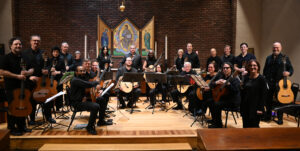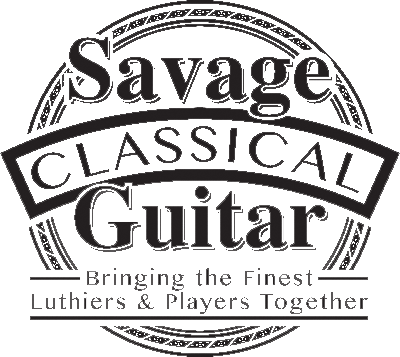by Mark Greenberg
May 2005
A Tribute to Aaron Shearer, featuring performances by Julian Gray, David Tanenbaum, and David Starobin
American Youth Hostel
March 25, 2005
All good teachers (not just of guitar, but any discipline) have this in common: they do not force their students into a common mold, but allow each to develop in his (or her) own way. No finer tribute to Aaron Shearer, who was honored by the NYCCGS on March 25th, could be shown than the various approaches evidenced by his three former students, the fine guitarists Julian Gray, David Tanenbaum, and David Starobin.
Julian Gray is principally known — to me, at least — as half of an excellent guitar duo, Gray and Pearl, as witness their CD Baroque Inventions. As a soloist, he is most accomplished also — an introspective, lyrical player with lovely tone and fine musicality. His program, three pieces by Napoleon Coste and the Ponce Sonatina Meridional — was beautifully played and could not fail to please.
Far different is David Tanenbaum — a most mercurial guitarist, capable of great stylistic control of color, mood and voice. In a De Visee suite, Tanenbaum managed to coax a wonderfully dry and delicate baroque sound from a modern instrument. This set was also admirable in that it in no way presented these as “potted pieces,” but gave a fair sense of graceful strumming that a royal court could (and no doubt did) gavotte to.
A far different court is evoked by Hans Werner Henze’s Royal Winter Music. In David Tanenbaum’s hands, the two excerpts presented were far more approachable than is commonly the case. True, his spoken set-up of each was fine. For an atonalist, Henze is a surprisingly accomplished writer. His comments upon the Aguecheek excerpt were poetic and introduced this comparatively melodic section beautifully. For Tanenbaum’s part, he is a surprisingly good reader and beautifully recited, from memory, the opening monologue of Richard III (“Now is the winter of our discontent …”). After such a preamble, the emotive intent of the music followed clearly and logically. As per Henz’s instructions, he gave his Daniel Friederich guitar quite a shellacking, but Friederich being French, after all, who can say Richard III wouldn’t have done as much and more?
The recital concluded with an interesting program by David Starobin, playing a ’23 Hauser I. These particular Giuliani Variations (“Liebe und Ruhm”) are not too often heard, and were performed with a flowing rich Hauser sound. For the very rarely performed Sor piece, David Starobin gave an interesting short talk, hypothesizing (no doubt correctly) that Sor attended the premiere of Berlioz’s Symphonie Fantastique. Indeed, Sor’s piece does share much of the same intoxicated (or possibly sleep-deprived) dreamlike quality. This piece, with its odd, insistent harmonics, has to be heard to be believed, and heard it was. For the conclusion, Mr. Starobin gracefully brought the program back to its didactic impetus and played some quite simple works by Giuliani. But, as Stephen Sondheim might say, How that boy can play! In Starobin’s hands, even these rudimentary pieces were shown to contain plenty of music. On the other hand, the final Tarantella was far from a beginner’s exercise, and brought the evening’s music to a dizzying and satisfying conclusion.
Thereafter, mine Editor Andrew Dickenson and the assembled officials of the NYCCGS presented Mr. Shearer with his Lifetime Achievement plaque, an appropriate honor for helping to bring such music into the world.









